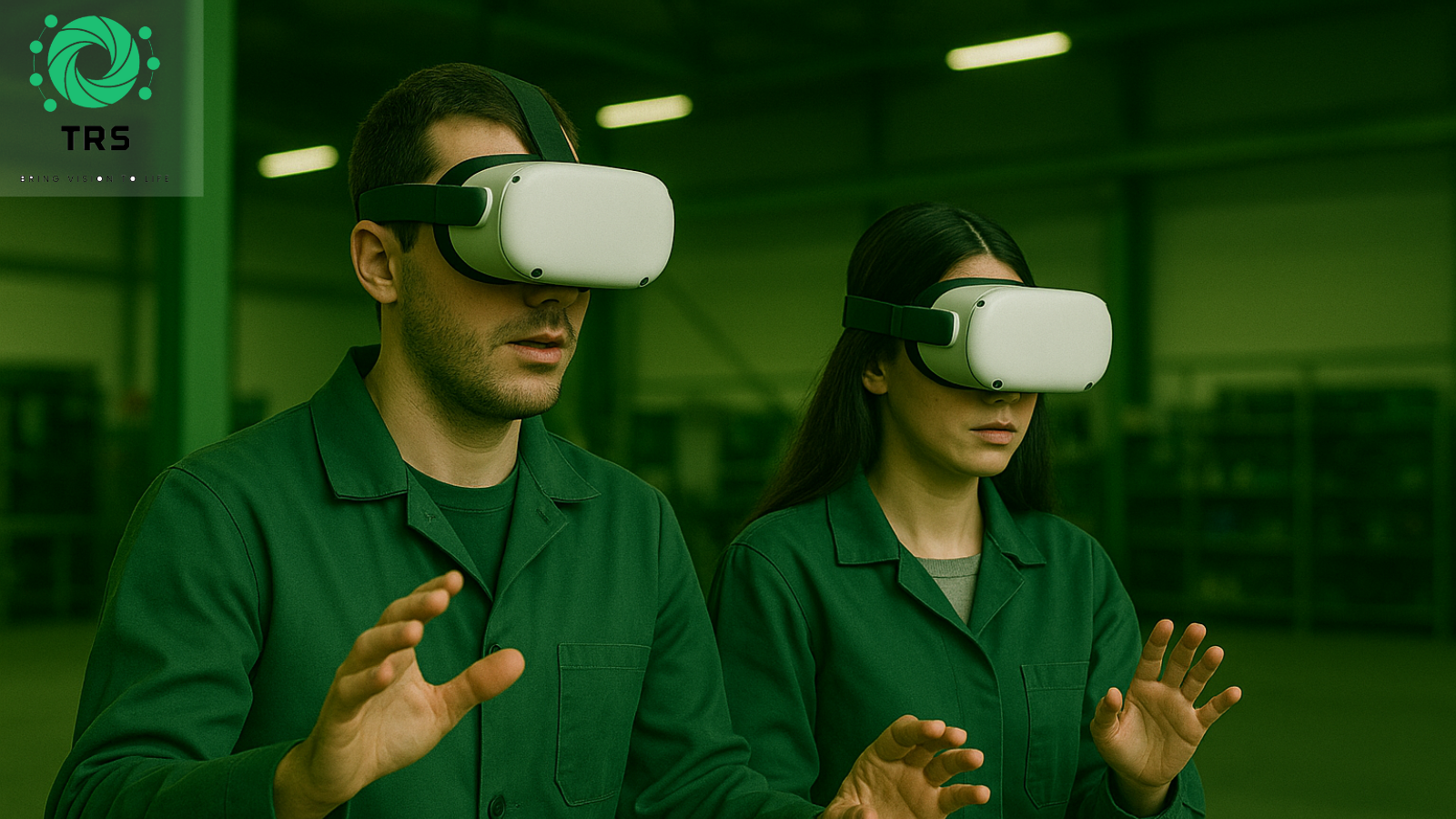Virtual Reality Training is an advanced way to learn by stepping into a computer-generated environment that feels real. Instead of reading long documents or watching videos, learners wear a headset and enter a virtual space where they can practice real-life tasks in a safe and interactive setting.
In this guide, we will explore what virtual reality training is, how it works, and why it is becoming a powerful tool in education and business. You will also discover how it connects with the latest technology trends like AI automation and Google VEO 3, making training smarter and more effective.
What Is Virtual Reality Training
Virtual reality training uses 3D environments to help people learn through experience. By wearing a virtual reality headset, users are transported into a digital space where they can perform tasks just as they would in the real world. They can move around, interact with objects, and make decisions in real time.
This method is now being used in many areas such as healthcare, aeronautics, construction, corporate training, education, and customer service. From surgeons practicing delicate procedures to sales teams learning how to handle customers, this immersive learning approach is transforming the way people gain knowledge and skills.
How Virtual Reality Training Works
VR training begins with a headset that displays a virtual world around the user. The headset tracks head and body movements, while hand controllers allow interaction with objects in the virtual space. Some setups even include voice commands or motion sensors for a deeper learning experience.
The goal is to simulate real situations in a controlled and risk-free environment. This helps learners get comfortable with their tasks before handling them in real life. For example, a firefighter can train for emergencies without putting themselves in danger.
VR simulations can be adjusted based on skill level, learning pace, and feedback. This makes training more personalized and effective.
Key Benefits of Virtual Reality Training
Safe and practical learning
Learners can make mistakes and learn from them without any real-world consequences. This is especially useful in fields like healthcare, flight, and heavy machinery operation.
Faster and better understanding
Instead of just listening or reading, learners are actively involved. This increases engagement, improves memory, and helps them apply what they have learned more confidently.
Cost savings over time
While the initial setup may require investment, it reduces costs in the long run. There is no need for travel, printed material, or repeated physical resources.
Instant feedback and improvement
Virtual training often includes real-time feedback. Users can see their performance and make changes quickly, helping them improve faster.
High engagement and motivation
The realistic environment keep learners interested and focused. This leads to better results and higher completion rates.
Industries Using Virtual Reality
Many industries are already using this training because of its proven effectiveness:
- Healthcare professionals use it for surgical training and patient care simulations.
- Pilots train in flight simulators to improve response in real-time situations.
- Construction workers practice operating machinery and following safety protocols.
- Corporate teams develop soft skills such as leadership, communication, and conflict resolution.
- Educators are exploring metaverse education to make lessons more interactive and engaging for students.
How AI Automation Improves VR Training
The integration of AI automation with virtual reality training is making learning even more powerful. Artificial intelligence can track user behavior, analyze mistakes, and provide personalized suggestions. This means each learner gets a custom experience that fits their learning pace and needs.
For example, in a virtual customer service scenario, AI can detect hesitation, tone, or incorrect responses and offer immediate tips for improvement. This intelligent support not only speeds up learning but also boosts long-term retention.
AI automation also helps businesses monitor training progress, identify skill gaps, and adjust programs as needed. This creates a smarter, more data-driven approach to training.
The Role of Google VEO 3 in Virtual Reality Training
Google VEO 3 is one of the latest technologies supporting better visual experiences in virtual reality. With sharper graphics, faster motion tracking, and improved environment rendering, it makes VR training feel even more real.
This technology allows developers to build highly realistic training modules that respond smoothly to user actions. Whether you are walking through a virtual factory floor or practicing a public speaking session in front of a digital audience, the experience is more immersive and lifelike with the support of advanced tools like Google VEO 3.
Google’s ongoing investment in spatial computing and visual intelligence continues to push the boundaries of what virtual training can offer.
Top Trending Keywords in Virtual Reality
To stay updated with the latest in VR, here are some important terms worth knowing:
- Immersive learning refers to hands-on experience in a virtual environment
- VR simulations are realistic training environments created using 3D technology
- Metaverse education involves teaching and learning in connected digital worlds
- Spatial computing allows machines to understand space and movement in VR
- Haptic feedback adds a sense of touch to the virtual experience
- Digital twins are virtual copies of real-world systems used for training
These concepts are shaping the future of VR training and expanding its use in both professional and academic fields.
Final Thoughts
Virtual reality training is not just a new way to learn—it is a better way. It brings education and training into a more engaging, realistic, and flexible space where people can grow their skills safely and confidently. As more industries hold this method, the benefits continue to increase. As part of a broader shift toward digital transformation, tools like AI automation and Google VEO 3 are making virtual training even more effective and personalized. Whether you are a business owner looking to train your team or an educator exploring new teaching methods, virtual reality training is a smart step forward.




